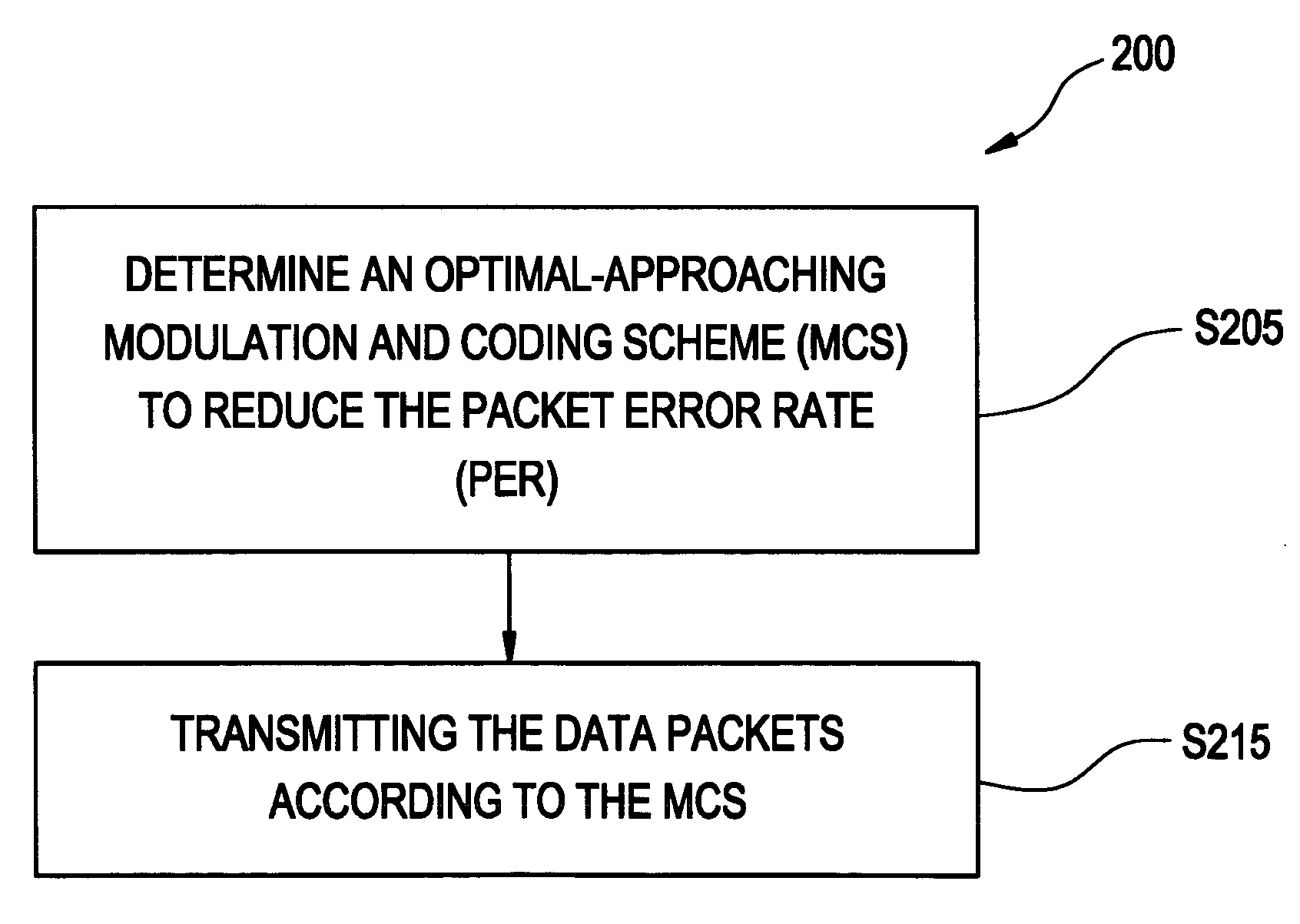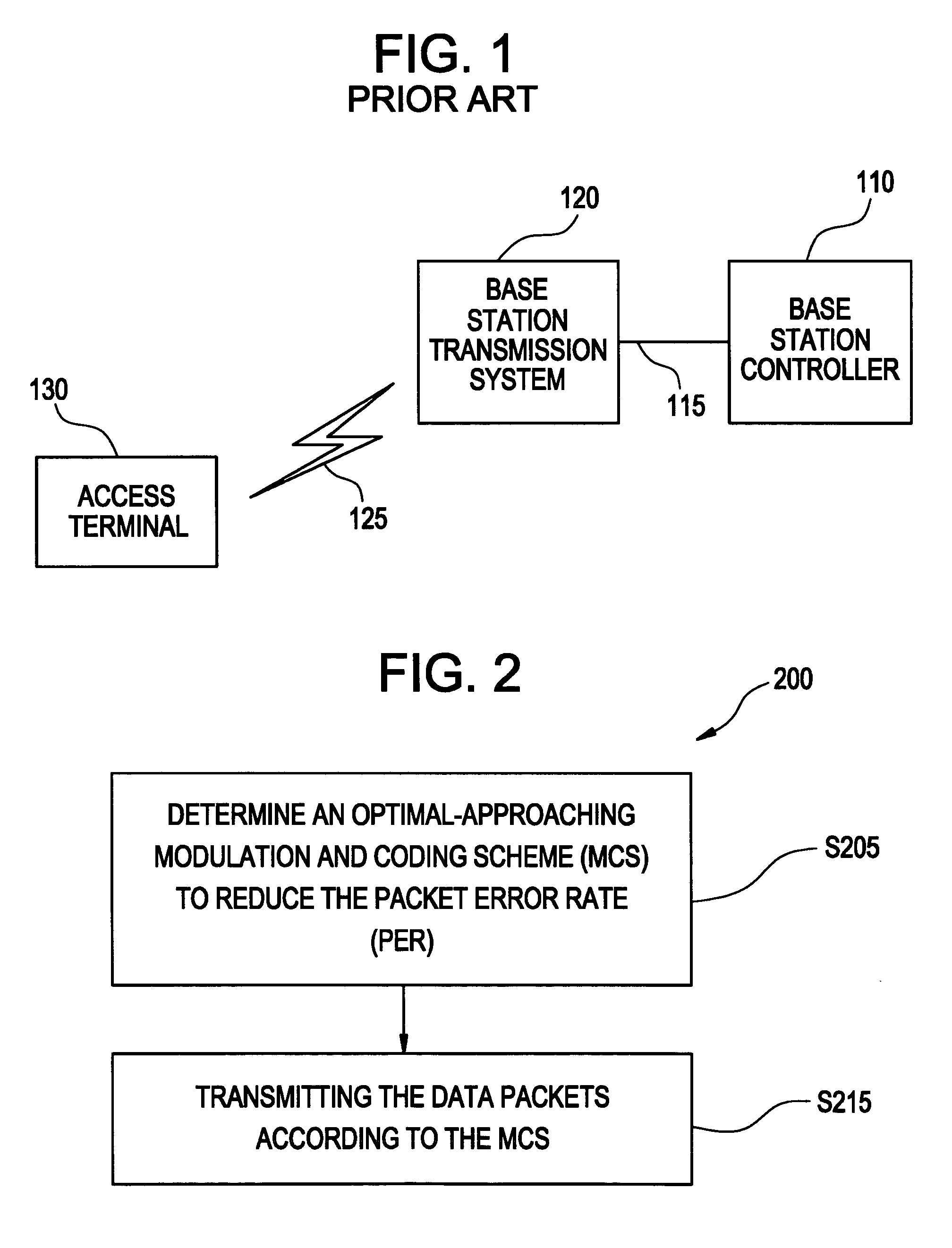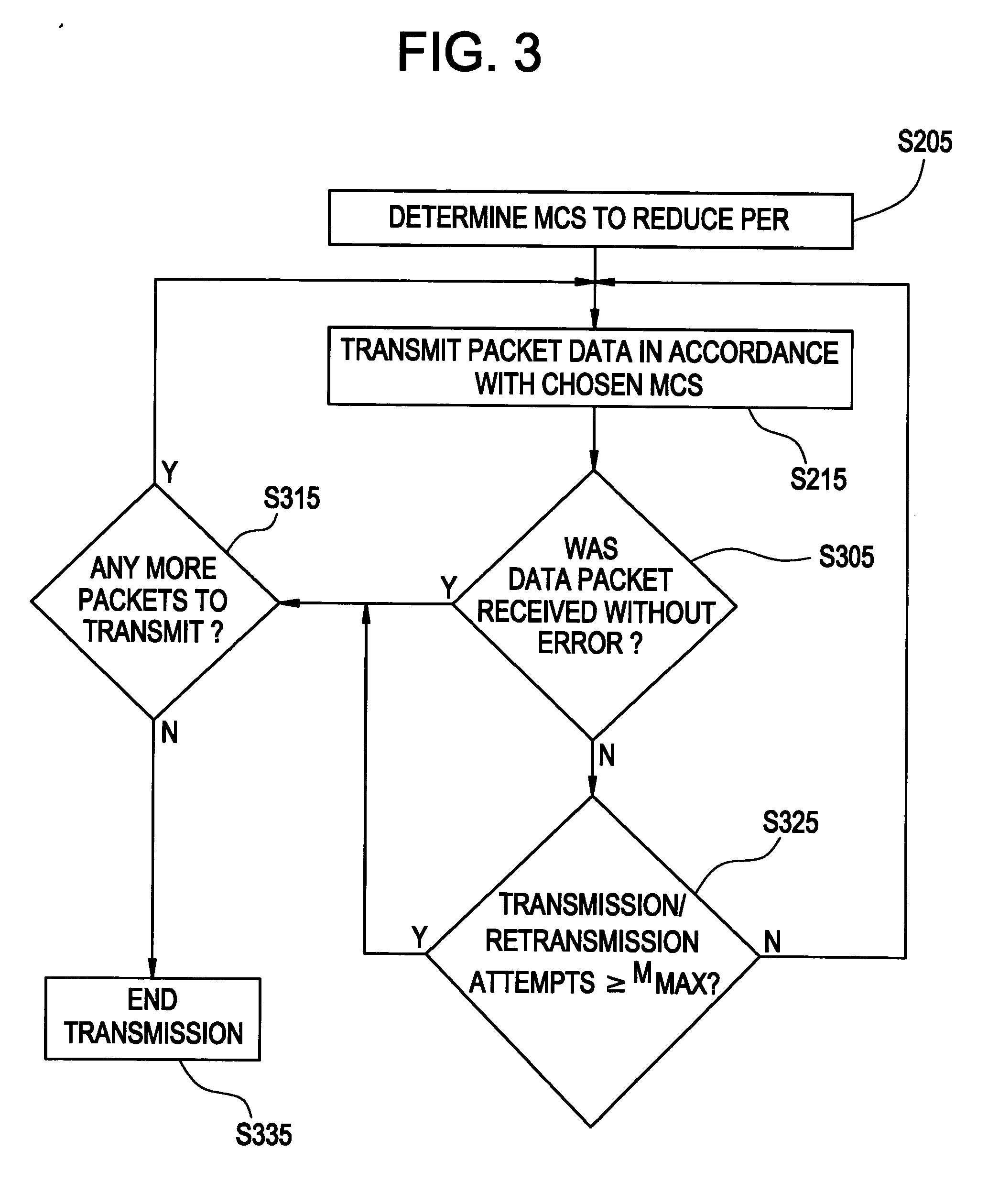Method of transmitting or retransmitting packets in a communication system
- Summary
- Abstract
- Description
- Claims
- Application Information
AI Technical Summary
Benefits of technology
Problems solved by technology
Method used
Image
Examples
example algorithm 1
An Optimal Algorithm
ω*(1)=arg mini{C(ωi)+Σρ(1)C(ω*(2|ρ(1), ωi))P(ρ(1))} (16)
s / tΣρ(1)Σρ(2)P(ωiρ(1)+ω*(2|ρ(1), ωi)ρ(2)<=β|ρ(1), ρ(2))P(ρ(1), ρ(2))<=ε (17)
where ω*(2|ρ(1), ωi)=arg minjC(ωj) (18)
s / tΣρ(2)P(ωiρ(1)+ωjρ(2)<=β|ρ(1), ρ(2))P(ρ(2))<=ε (19)
For the second transmission,
ω*(2|ρ(1), ω*(1))=arg minjC(ωj) (20)
s / tΣρ(2)P(ω*(1)ρ(1)+ωjρ(2)<=β|ρ(1), ρ(2))P(ρ(2))<=ε (21)
Note that P(ρ(2)) in (21) could be an updated pdf conditioned now on the latest prediction of ρ(2), aided by latest mobile channel report, as opposed to the P(ρ(2)) in (19) which is conditioned on the prediction of ρ(1).
In an embodiment of the invention, the residual probability of error (PER) constraints ((17), (19) or (21)) of bin packing may not have a solution. In such an embodiment, the largest amount of resource possible is allocated so that the amount by which the constraint is violated is reduced or minimized. In situations when cost function tie, the ties are broken in ...
example algorithm 2
A Near-Optimal Algorithm
Below are some examples of two transmissions maximum embodiments of the invention using a near-optimal-approaching method.
ω#(1)=arg mini{C(ωi)+C(ω#(2|ωi))} (22)
s / tΣρ(1)Σρ(2)P(ωiρ(1)+ω#(2|ωi)ρ(2)<=β|ρ(1), ρ(2))P(ρ(1), ρ(2))<=ε (23)
where ω#(2|ωi)=arg minjC(ωj) (24)
s / tΣρ(1)Σρ(2)P(ωiρ(1)+ωjρ(2)<=β|ρ(1), ρ(2))P(ρ(1), ρ(2))<=ε (25)
For the second transmission,
ω#(2|ρ(1), ω#(1))=arg minjC(ωj) (26)
s / tΣρ(2)P(ω#(1)ρ(1)+ωjρ(2)<=β|ρ(1), ρ(2))P(ρ(2))<=ε (27)
This a priori estimate of the allocation ω#(2|ωι) used in the computation of ω#(1) in (22) is an alternative and it is computed as an average over ρ(1) as well in (25), whereas, P(ρ(1)) of (25) may be a delta function a posteriori i.e. after ρ(1) event has been realized. Since the variation in aposteriori ρ(1) is assumed to exist, albeit perhaps less than optimal accurately with respect to the optimum-approaching embodiment, the overall resource allocation ω#(1)+ω#(2|ω#(1),...
example algorithm 3
A Near-Optimal Algorithm (Approximate Maximum Expected Throughput (MET))
An alternate embodiment may be expressed as follows.
ω˜(1)=arg mini{C(ωi)+Σρ(1)Σρ(2)C(ω˜(2|ωi, ρ(1), ρ(2)))P(ρ(1), ρ(2))} (28)
s / tΣρ(1)Σρ(2)P(ωiρ(1)+ω˜(2|ωi, ρ(1), ρ(2))ρ(2)<=β|ρ(1), ρ(2))P(ρ(1), ρ(2))<=ε (29)
where ω˜(2|ωi, ρ(1), ρ(2))=arg minjC(ωj) (30)
s / tP(ωiρ(1)+ωjρ(2)<=β|ρ(1), ρ(2))<=ε (31)
For the second transmission,
ω˜(2|ρ(1), ω˜(1))=arg minjC(ωj) (32)
s / tΣρ(2)P(ω˜(1)ρ(1)+ωjρ(2)<=β|ρ(1), ρ(2))P(ρ(2))<=ε (33)
This a priori estimate of the allocation ω˜(2|ωi, ρ(1), ρ(2)) of (30) used in the computation of ω˜(1) in (28) is an alternative, as it is computed assuming knowledge of ρ(2) as in (30), (31), whereas in reality, P(ρ(2)) is not a delta function. Since the variation in ρ(2) is assumed to be non-existent, albeit not necessarily true, the overall resource allocation ω˜(1)+ω˜(2|ω˜(1), ρ(1), ρ(2)) may be under-allocated. Furthermore, for the same reason of the vari...
PUM
 Login to View More
Login to View More Abstract
Description
Claims
Application Information
 Login to View More
Login to View More - R&D
- Intellectual Property
- Life Sciences
- Materials
- Tech Scout
- Unparalleled Data Quality
- Higher Quality Content
- 60% Fewer Hallucinations
Browse by: Latest US Patents, China's latest patents, Technical Efficacy Thesaurus, Application Domain, Technology Topic, Popular Technical Reports.
© 2025 PatSnap. All rights reserved.Legal|Privacy policy|Modern Slavery Act Transparency Statement|Sitemap|About US| Contact US: help@patsnap.com



